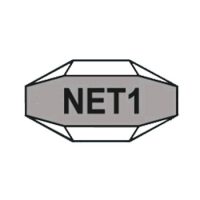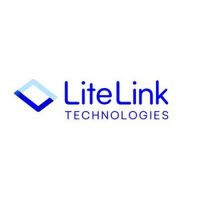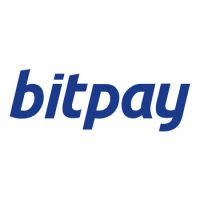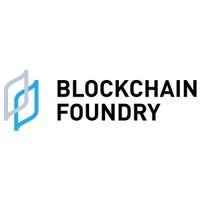Blockchain Press Releases
IDTechEx Discusses the Key Technologies Players Are Using in Li-Ion Battery Recycling

BOSTON, July 21, 2023 /PRNewswire/ — Li-ion batteries are widely used in various markets, such as in consumer electronics, electric vehicles (EVs) and stationary energy storage. However, as demand for Li-ion batteries continues to increase, the need to manage their sustainability through their entire lifecycle, including at end-of-life (EOL), is also becoming increasingly important. At end-of-life, Li-ion batteries can be recycled to re-obtain the contained valuable metals, such as nickel, cobalt, and lithium. Depending on the recycling technique employed, products from these processes may need further refining or processing to enable their re-introduction into new battery manufacturing. In their latest report, “Li-ion Battery Recycling Market 2023-2043“, IDTechEx discuss and analyze three key recycling technologies being employed by players commercially, including mechanical, hydrometallurgical and pyrometallurgical recycling.
Mechanical Recycling
Mechanical processing is the simplest technique, which is employed by many players globally, and is typically the initial step in Li-ion battery recycling. This often starts with a disassembly step, which is performed manually due to differences in EV battery pack design and requires a skilled workforce to achieve this. Typical steps thereafter include shredding, grinding, and crushing. This breaks down the high-value materials, separates them from foils and casing, and is performed in an inert atmosphere. Often, sieving is used to separate larger fragments of current collectors, casings, and separators from electrode materials, which are constructed of very fine powders. This results in the production of black mass, which requires further refining via hydrometallurgical or pyrometallurgical processing to produce battery-grade metal salts. The majority of players in Europe and North America currently only have mechanical recycling capabilities. Therefore, most of these recyclers do not currently have the capabilities to produce battery-grade materials that are ready to be introduced into new battery manufacturing. This black mass is typically transported to recyclers in the Asia-Pacific region that have these capabilities.
Pyrometallurgical Recycling
Pyrometallurgy refers to the use of heat to extract battery materials, typically performed at high throughput in an electric arc or shaft furnace. Advantages to the process include little pre-treatment requirements, and that it is battery chemistry agnostic, and so can receive various metal-containing waste streams as feedstock, such as NiMH, Ni-Cd and Li-ion batteries. However, the process has high-capital requirements and is also energy intensive while requiring off-gas cleaning. Pyrometallurgy produces a mixed metal alloy, as well as a slag stream, containing lithium, manganese, and aluminum. Therefore, this would still require further hydrometallurgical processing if all valuable metals were to be re-obtained at battery grade.
Hydrometallurgical Recycling
Hydrometallurgical techniques can be used to recycle black mass directly or refine alloys produced from pyrometallurgy to form battery-grade metal salts. These salts can be re-introduced into new cathode precursor manufacturing and are, therefore, of higher value than black mass produced from mechanical recycling. In hydrometallurgical recycling, leaching, solvent extraction, or precipitation steps can be employed to selectively extract metals such as nickel and cobalt from black mass produced by mechanical recycling in the form of battery-grade salts. The key benefits of hydrometallurgical recycling are that more of the valuable metals can be recovered, and it is less energy intensive than pyrometallurgical recycling. However, the costs of reagents and high volumes of water consumption pose some downsides. Though, through interviews with IDTechEx, some recyclers have commented that they are able to cycle water multiple times through the recycling process to maximize its efficiency.
Currently, the majority of hydrometallurgical recycling capacity resides in the Asia-Pacific region, including key players such as SungEel HiTech, Exigo Recycling and ACE Green Recycling. However, players in Europe and the US recognize the benefits of hydrometallurgical processing and are in the process of expanding their hydrometallurgical capacities. Fortum recently commenced commercial operations of its hydrometallurgical plant in Harjavalta, Finland. This marks the first commercial-scale facility in Europe for hydrometallurgical recycling. In the US, Li-Cycle are planning to establish their own commercial-scale hydrometallurgical plant too.
Other Techniques
While these are generally the three most developed processes used by Li-ion battery recycling players, other routes are being explored. Namely direct recycling is a technique that involves mechanical pre-processing and component separation steps, followed by reactivating the battery material to recover the capacity lost during cycling, but without breaking down the crystal structure of the cathode material. However, this is a pre-commercialized technology being investigated by research bodies on a more lab-scale basis.
Concluding Remarks
Battery manufacturers are keen to source materials produced from recycling to mitigate against fluctuating metal prices and to domesticate material supply. As the volume of end-of-life Li-ion batteries continues to grow, recyclers will continue to scale up their recycling capacities through the construction of new plants to meet recycling demand. By recycling Li-ion batteries via hydrometallurgical processing, recyclers can produce battery-grade metal salts, which can be utilized in new battery manufacturing. Growth in both hydrometallurgical and mechanical recycling capacities will be seen across North America, Europe and the Asia-Pacific. Recyclers in Europe and North America will start establishing commercial-scale hydrometallurgical recycling facilities in order to produce higher-value battery-grade metal salts rather than the black mass they have generally and historically produced. This will provide opportunities for battery manufacturers in these regions to start domesticating their material supply for new battery manufacturing while reducing risks related to raw material supply and fluctuating costs.
For more on technologies, key players, policies, economics, and granular 20-year recycling market forecasts, please refer to IDTechEx’s latest report, “Li-ion Battery Recycling Market 2023-2043“.
About IDTechEx
IDTechEx guides your strategic business decisions through its Research, Subscription and Consultancy products, helping you profit from emerging technologies. For more information, contact [email protected] or visit www.IDTechEx.com.
Images download:
https://www.dropbox.com/scl/fo/yjqo7mmx1gma5ewldbm6t/h?dl=0&rlkey=zif2puoedxs002kmtbi474tot
Media Contact:
Lucy Rogers
Sales and Marketing Administrator
[email protected]
+44(0)1223 812300
Social Media Links:
Twitter: www.twitter.com/IDTechEx
LinkedIn: www.linkedin.com/company/IDTechEx
Photo – https://mma.prnewswire.com/media/2158380/IDTechEx.jpg
Logo – https://mma.prnewswire.com/media/478371/IDTechEx_Logo.jpg
![]() View original content:https://www.prnewswire.co.uk/news-releases/idtechex-discusses-the-key-technologies-players-are-using-in-li-ion-battery-recycling-301882112.html
View original content:https://www.prnewswire.co.uk/news-releases/idtechex-discusses-the-key-technologies-players-are-using-in-li-ion-battery-recycling-301882112.html

Blockchain Press Releases
Bullish partners with the Gibraltar Government and GFSC to pioneer world’s first crypto clearing regulation
GIBRALTAR, May 13, 2025 /PRNewswire/ — Bullish, one of the fastest-growing regulated virtual asset exchanges, today announced its partnership with the Gibraltar Government and the Gibraltar Financial Services Commission (GFSC) to develop the world’s first regulation for the clearing and settlement of derivative contracts settled in virtual assets. This innovation will enable virtual asset derivative contracts to be cleared and settled in virtual assets by a recognized clearing house for the first time. This groundbreaking initiative moves beyond the limitations of traditional fiat-based clearing and settlement infrastructure and marks a significant milestone in the evolution of virtual asset regulation.
Over the past six months, Bullish and the GFSC have collaborated and agreed to create a regulatory framework that seamlessly adapts traditional finance clearing regulations with the unique requirements and capabilities of the virtual asset market.
For example, under the proposed clearing framework, select virtual assets may be eligible as collateral and settlement currency. The selection criteria will follow the principles underpinning existing traditional clearing regulations. Additionally, the framework will expand the range of institutions authorized to hold collateral, enhancing market integrity and participation while mitigating key risks.
Setting the standard for a crypto clearing solution
Major virtual asset exchanges have been performing the clearing function without appropriate regulatory oversight, leading to failures impacting customers. The proposed regime introduces a regulated clearing house entity, separate and independent from the exchange and its participants, with improved transparency and capitalization to strengthen market infrastructure protection.
In a separate announcement, His Majesty’s Government of Gibraltar expressed its enthusiasm for the framework, which fosters trust, resilience, and integrity in virtual asset markets. Bullish warmly welcomes their announcement and is excited to work alongside the government and GFSC to bring this groundbreaking regulatory framework to fruition.
“There is currently no regulation that specifically addresses the clearing needs of the crypto industry. We aim to change that by introducing a framework that manages risk for virtual asset trading and is aligned with traditional market infrastructure standards,” said Tom Farley, Bullish Group CEO. “While Central Counterparties have become more robust in other asset classes, this initiative will bring that same robust risk management and regulatory oversight to the crypto clearing space that EMIR & Dodd-Frank brought to traditional derivatives markets. We welcome the announcement from the government of Gibraltar and look forward to introducing our joint proposal to the market.”
The Hon Nigel Feetham KC MP, Minister for Financial Services adds, “Gibraltar is renowned for pioneering clear regulation and embracing forward-looking technology, being the first jurisdiction globally to introduce legislation for firms using Distributed Ledger Technology. We are excited to deepen our relationship with Bullish and to introduce this unprecedented virtual asset clearing solution to the market.”
Bullish exchange poised to become first regulated virtual asset clearing house globally
In anticipation of the new framework, Bullish plans to introduce its Clearing Services offering alongside Options trading later this year. This initial launch will integrate a variety of clearing benefits into the market as Bullish moves toward establishing a standalone clearing house under the new regulatory framework. With licenses from the GFSC, the German Federal Financial Supervisory Authority (BaFin), and the Hong Kong Securities and Futures Commission (SFC), Bullish is well-positioned to set the standard for virtual asset clearing solutions.
“Our long-term goal is to establish a robust regulatory framework that not only meets the current needs of the virtual asset ecosystem but also anticipates future developments. This initiative underscores our commitment to operating a regulated, compliant exchange that supports institutional participation with an end-to-end clearing solution,” said Randi Abernethy, Head of Clearing and Group Risk at Bullish. “Several market participants have already voiced strong support for our business model because they recognize the value of regulated central clearing. We look forward to Bullish becoming the first operational regulated digital assets clearing house in the world.”
In advance of this, Bullish will form a clearing member working group to bring industry leaders together to share their expertise, establish the initial clearing network, and enhance the robustness of Bullish’s clearing ecosystem.
Media contact
Bullish
[email protected]
HM Government of Gibraltar
[email protected]
Gibraltar Financial Services Commission
[email protected]
About Bullish exchange
With a focus on developing products and services for the institutional digital assets sector, Bullish has rewired the traditional exchange to benefit asset holders, enable traders and increase market transparency. Supported by the Group’s well-capitalized treasury, Bullish’s digital asset spot and derivatives trading services utilize high-performance central limit order matching and proprietary market making technology to deliver deep liquidity and tight spreads within a compliant framework.
Launched in November 2021, the exchange is available in 50+ select jurisdictions in Asia Pacific, Europe, Africa, and Latin America. Bullish prioritizes compliance and safeguarding customer assets through robust security measures and regulatory oversight. The business is licensed by the Hong Kong Securities and Futures Commission, German Federal Financial Supervisory Authority, and the Gibraltar Financial Services Commission. For more information on the Bullish exchange, please visit bullish.com and follow LinkedIn and X.
Forward-Looking Statements
This press release may include “forward-looking statements” relating to future events or the Bullish Group’s future financial or operating performance, business strategy, and potential market opportunity. Such forward-looking statements are based upon estimates and assumptions that, while considered reasonable by the Bullish Group, are inherently uncertain and are subject to risks, uncertainties, and other factors which could cause actual results to differ materially from those expressed or implied by such forward-looking statements. You should not place undue reliance on any such forward-looking statements, which speak only as of the date they are made, and the Bullish Group undertakes no duty to update these forward-looking statements.
View original content:https://www.prnewswire.co.uk/news-releases/bullish-partners-with-the-gibraltar-government-and-gfsc-to-pioneer-worlds-first-crypto-clearing-regulation-302453487.html

Blockchain
Blocks & Headlines: Today in Blockchain – May 12, 2025 | Rootstock, Zimbabwe Carbon Registry, Fastex, 21Shares, The Blockchain Group

Welcome to Blocks & Headlines, your daily op-ed style deep dive into the most pivotal blockchain and crypto stories shaping today’s market. In this edition—May 12, 2025—we cover:
-
Bitcoin DeFi Security Strengthens as Rootstock garners 81% of Bitcoin’s hashrate
-
Zimbabwe’s Blockchain Carbon Credit Registry aims to restore investor trust
-
Token2049 Dubai Highlights spotlight Fastex’s Web3 innovations
-
21Shares’ New ETP for Cronos (CRO) bridges traditional finance and DeFi
-
The Blockchain Group’s €9.9 M Capital Raise fuels its Bitcoin treasury strategy
Below, each story is summarized with key takeaways and opinion-driven context.
Introduction
Today’s blockchain landscape is defined by two contrasting forces: institutional maturation—as legacy players and governments adopt tokenized assets and infrastructure—and startup-driven innovation—where Web3 pioneers push boundaries in DeFi, NFTs, and on-chain governance. Major trends include:
-
Security & Scalability: Layer-2 solutions and cross-chain bridges are gaining traction to secure and scale Bitcoin and Ethereum ecosystems.
-
Transparency & Trust: From carbon credits to capital markets, blockchain is repeatedly chosen to enhance auditability and investor confidence.
-
Mainstream Access: Crypto ETPs and regulated token offerings are lowering barriers for retail and institutional investors.
-
Treasury Management: Public companies are increasingly using Bitcoin and token holdings as strategic assets to hedge against macro volatility.
Let’s unpack today’s five developments and their broader implications.
1. Bitcoin DeFi Security Strengthens with Rootstock’s Hashrate Share
What happened: A new Messari report finds that Rootstock (RSK), Bitcoin’s oldest layer-2 smart-contract platform, now commands 81% of Bitcoin’s total hashrate, up from 56% before major mining pools Foundry and SpiderPool onboarded in February. Transactions on Rootstock are 95% cheaper than on-chain Bitcoin and 55% cheaper than Ethereum, positioning RSK for sustained DeFi growth in 2025.
Source: CoinDesk
Analysis & commentary:
Rootstock’s dominant hashrate share underscores two key shifts:
-
Security by Convergence: By leveraging Bitcoin’s massive mining network, RSK mitigates the common 51% risk faced by smaller chains.
-
Cost-Efficiency for DeFi: Lower fees make RSK an attractive alternative to Ethereum for yield protocols, lending markets, and decentralized exchanges.
However, challenges remain. Smart-contract developers must integrate robust cross-chain bridges—Rootstock’s partnership with LayerZero is a start—to attract liquidity. Moreover, regulatory scrutiny of DeFi is rising; RSK’s governance will need transparent on-chain dispute resolution and compliance tooling to win institutional adoption.
2. Zimbabwe’s Blockchain Carbon Credit Registry to Revive Investor Confidence
What happened: In Harare on May 9, the Zimbabwean government launched the world’s first blockchain-enabled carbon credit registry, developed by Dubai’s A6 Labs. The immutable ledger will record issuance, trading, and retirement of credits, addressing the fallout from 2023’s abrupt project cancellations and a 50% revenue levy that spooked developers. The new Zimbabwe Carbon Markets Authority (ZCMA) will oversee licensing via the zicma.org.zw portal.
Source: Bloomberg
Analysis & commentary:
Zimbabwe’s registry is an instructive case study in how blockchain can restore transparency and rebuild market trust:
-
Immutable Audits: Every credit’s provenance is verifiable on-chain, deterring double-counting and fraud.
-
Regulatory Framework: A dedicated authority streamlines approvals, balancing market access with environmental integrity.
-
Investor Reassurance: By codifying rules in smart contracts, Zimbabwe signals that future policy shifts will be governed by code, not sudden ministerial edict.
Nonetheless, blockchain is not a panacea. Effective enforcement still depends on reliable on-the-ground measurement and reporting. The real test will be whether smaller African producers—Kenya, Zambia—adopt interoperable registries, creating a pan-continental carbon marketplace.
3. Web3 Innovation Takes Center Stage at Token2049 Dubai
What happened: Between April 30 and May 1, Token2049 Dubai convened industry leaders in the Emirates. Fastex, a platinum sponsor, showcased its Bahamut blockchain (PoSA consensus), the YoWallet custodial solution, and a wave of new apps—YoHealth, YoPhone/YoSIM, YoBlog—all designed to expand Web3 use cases beyond finance. Fastex also co-hosted regulatory forums with Solidus Labs and launched the Bahamut Grants program to seed developer innovation.
Source: Cointelegraph
Analysis & commentary:
Token2049’s Dubai edition highlights an ecosystem maturation where:
-
Compliance & Growth Coexist: Legal breakfasts signaled that self-regulation and layered oversight can lower entry barriers without stifling ingenuity.
-
Beyond Finance: By unveiling telecom and health apps, Fastex challenges the notion that blockchain is niche—real-world use cases can drive mainstream adoption.
-
Brand Ambassadors: Football legend Patrice Evra’s presence at YoHealth’s booth illustrates how cultural icons can amplify blockchain’s reach.
Moving forward, projects must demonstrate measurable end-user utility and scalable infrastructure to avoid the “pilot-only” trap. Dubai’s supportive regulatory sandbox remains an ideal proving ground.
4. 21Shares Launches ETP for Cronos (CRO) – Bridging TradFi and DeFi
What happened: Swiss issuer 21Shares listed a new ETP (CRON) on May 12, offering direct exposure to CRO, the native token of Cronos—a Layer 1 chain built for DeFi, NFTs, and cross-chain interoperability with Ethereum and Cosmos. Investors can now trade CRO through regular brokerages without managing private keys or wallets.
Source: The Paypers
Analysis & commentary:
Tokenizing blockchain assets into regulated ETPs remains one of the most powerful drivers of institutional capital inflows:
-
Familiar Interfaces: By packaging CRO as a ticker, 21Shares lowers the learning curve for asset managers and pension funds.
-
Regulatory Alignment: ETPs fall under securities law, offering clear governance compared to unregulated spot tokens.
-
Ecosystem Growth: Cronos stands to benefit from increased liquidity and brand recognition, which in turn fuels DeFi activity on its network.
ETPs also invite scrutiny: fees, redemption mechanics, and underlying custodial risks must be transparent to preserve investor trust. As competition heats up—with products for BTC, ETH, SOL, and more—issuers will vie on pricing, ease of access, and institutional credibility.
5. The Blockchain Group’s €9.9 M Capital Raise Advances Bitcoin Treasury Strategy
What happened: Europe’s first Bitcoin Treasury Company, The Blockchain Group (ALTBG), completed a €9.888 million capital increase at €1.0932 per share on May 7, 2025. Proceeds will bolster its strategy to accumulate Bitcoin per fully diluted share while expanding consulting and AI-driven blockchain services.
Source: ActusNews via MarketScreener
Analysis & commentary:
The Blockchain Group’s financing round underscores a new corporate paradigm where holding BTC is core to the business model:
-
Shareholder Alignment: By tethering equity value to Bitcoin accumulation, management and investors share upside in crypto markets.
-
Operational Synergies: Subsidiaries in data intelligence and decentralized consulting can monetize both service fees and on-balance-sheet Bitcoin appreciation.
-
Regulatory Compliance: As a publicly listed entity on Euronext Growth Paris, ALTBG navigates EU financial rules, offering a transparent vehicle for crypto exposure.
Yet this approach carries volatility risk: sudden BTC price swings can compress earnings per share and spur shareholder activism. Mitigation strategies—such as hedged derivatives and staggered BTC purchases—will be critical to sustain growth without alarming investors.
Conclusion
Today’s highlights reveal a blockchain industry at once foundational and frontier:
-
Security & Scale: Rootstock’s hashrate gains fortify Bitcoin DeFi’s underpinnings.
-
Transparent Markets: Zimbabwe’s carbon registry sets a template for blockchain-backed commodity markets.
-
Web3 Diversification: Token2049 Dubai shows that true mass adoption demands real-world applications in health, telecom, and beyond.
-
Institutional Access: ETPs like CRON democratize token ownership for mainstream investors.
-
On-Balance-Sheet Crypto: The Blockchain Group exemplifies the rising class of publicly traded crypto-native firms.
As blockchain extends into supply chains, tokenized securities, and identity, the winners will be those who blend innovative protocol design with pragmatic regulatory alignment. Keep tuning into Blocks & Headlines for tomorrow’s top stories.
The post Blocks & Headlines: Today in Blockchain – May 12, 2025 | Rootstock, Zimbabwe Carbon Registry, Fastex, 21Shares, The Blockchain Group appeared first on News, Events, Advertising Options.
Blockchain Press Releases
Input | Output Partners with Brave to Integrate Cardano into Brave Wallet

Once live, the Input | Output (IO) led integration will bring full Cardano support to Brave Wallet, including Cardano native assets, as well as send, receive, swap, and signing capabilities- all natively embedded within Brave’s best-in-class browser wallet. This establishes Brave as a key partner to the Cardano community in the age of Voltaire.
SAN FRANCISCO and LONDON, May 12, 2025 /PRNewswire/ — Input | Output (IO), the preeminent Web3 blockchain infrastructure and engineering firm, today announced a strategic partnership with Brave Software, the creator of the leading privacy-first browser and integrated multi-chain Brave Wallet. Together, they will integrate Cardano into the Brave Wallet, enabling Cardano blockchain access and token management from within the Brave wallet.
“Our partnership with IO reflects Brave’s commitment to building a Web3 that maximizes interoperation for user choice, while giving them better tools to engage with decentralized ecosystems,” said Brendan Eich, CEO and co-founder of Brave and the Basic Attention Token (BAT). “Integrating Cardano into Brave Wallet not only expands multi-chain access, but also enhances security, governance participation, and the overall user experience.”
Through this integration, Brave users and the broader Cardano community will gain direct access to Cardano’s blockchain for activities such as governance participation and native asset management, all within the privacy-focused Brave Wallet. Additionally, Brave Wallet will support the execution of swaps with Cardano native tokens and other on-chain transactions. This major milestone enhances Brave’s multi-chain capabilities, adding to its existing support for networks like Ethereum and Solana. Cardano users will now be able to manage native assets like NIGHT, engage in governance, and seamlessly swap tokens—securely and privately—through Brave’s in-browser wallet.
“This collaboration with Brave is a natural fit,” said Charles Hoskinson, CEO of IO. “We share a vision for a more secure, accessible, and user-respecting Web3. By bringing Cardano into Brave Wallet, we are not only expanding functionality for Cardano users in the age of on-chain governance, but also advancing a new standard for how blockchain networks should empower individuals—protecting privacy while enabling active, on-chain participation.”
The partnership also sets the stage for future innovation around engagement with Cardano’s governance and Midnight, a blockchain developed by Shielded Technologies, an Input | Output spinout focused on confidential smart contracts and data protection.
Media Contacts:
Georgia Hanias
Input | Output (IO)
[email protected]
Catherine Corre
Brave Software
[email protected]
About Input | Output (IO)
Input |Output (IO) is a world-leading blockchain infrastructure and research engineering firm dedicated to building a sustainable Web3 ecosystem. IO is committed to advancing the next generation of blockchain innovation, focusing on scalability, security, and real-world adoption through pioneering research and cutting-edge engineering.
About Brave Wallet and Brave
Brave Wallet is the secure, multi-chain crypto wallet built directly into the Brave privacy browser—no extensions required. With Brave Wallet, users can manage tokens and NFTs; connect to DApps and onramp to Web3; and explore decentralized finance, social media, gaming, and more. Brave Wallet users can connect other “cold” wallets like Ledger & Trezor. They can buy, store, send, and connect to DApps on Solana, Ethereum and EVM chains, Zcash, and Filecoin.
Brave Wallet is available on desktop, Android, and iOS, and is free to use. To get started on desktop, Brave browser users can click the wallet icon near the address bar. On mobile, users can tap “⋮” (Android) or “…” (iOS), then tap the wallet icon.
Brave is a driving force leading the way for Web3 adoption, directly supporting Web3 into the broader Web through its privacy browser, independent search engine, and browser-native, multi-chain crypto wallet. Brave currently has over 85 million monthly active users. Learn more at brave.com.

Photo – https://mma.prnewswire.com/media/2683708/Charles_Hoskinson_Profile.jpg
Logo – https://mma.prnewswire.com/media/2683709/IO_Logo.jpg
![]() View original content:https://www.prnewswire.co.uk/news-releases/input–output-partners-with-brave-to-integrate-cardano-into-brave-wallet-302451409.html
View original content:https://www.prnewswire.co.uk/news-releases/input–output-partners-with-brave-to-integrate-cardano-into-brave-wallet-302451409.html

-

 Blockchain Press Releases7 days ago
Blockchain Press Releases7 days agoHTX Premieres USD1 Stablecoin Globally, Partnering with World Liberty Financial to Forge a New Era of Decentralized Economy
-
Blockchain6 days ago
Colb Asset SA Raises $7.3 Million in Oversubscribed Round to Bring Pre-IPO Giants to Blockchain
-

 Blockchain Press Releases5 days ago
Blockchain Press Releases5 days agoHTX and Justin Sun Launch $6M Mars Program Special Edition, Offering One User a Historic Space Journey
-

 Blockchain4 days ago
Blockchain4 days agoBitget Blockchain4Youth sostiene l’innovazione del Web3 e dell’IA all’hackathon “Build with AI” di Google Developer Group
-

 Blockchain4 days ago
Blockchain4 days agoBlocks & Headlines: Today in Blockchain – May 9, 2025 | Robinhood, Solana, Tether, China, Women in Web3
-

 Blockchain5 days ago
Blockchain5 days agoBlocks & Headlines: Today in Blockchain – May 7, 2025 | Coinbase, Riot Games, Curve DAO, Litecoin, AR.IO
-

 Blockchain Press Releases4 days ago
Blockchain Press Releases4 days agoBybit Surpasses 70 Million Users, Reinforces Commitment to Transparency and Institutional Growth
-

 Blockchain Press Releases7 days ago
Blockchain Press Releases7 days agoJuCoin made a global impact at TOKEN2049 Dubai, advancing its ecosystem with the “Peak Experience” vision and JuChain’s robust tech.



























